HOBBITHOUSE REVIEWS OF BOOKS ON WOOD AND WOODWORKING
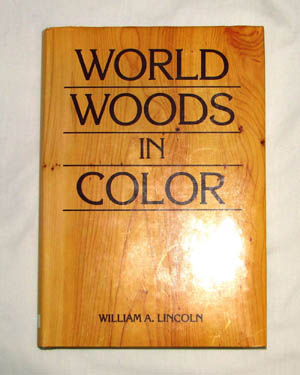
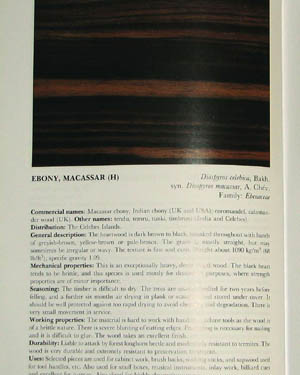
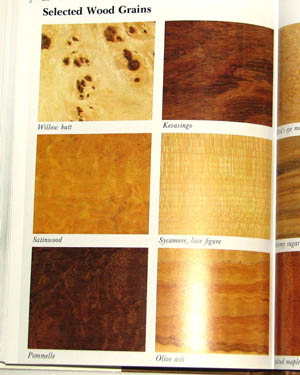

TITLE: World Woods in Color
AUTHOR(s): William Alexander Lincoln
PUBLISHER / YEAR: / # PAGES Linden Publishing, 1996, 320pp
ISBN: 0-941936-20-1 ISBN: (13) 978-0-941936-20-0
PRICE: list, $60, likely street, about $40 new, down to $30 used
SUMMARY DESCRIPTION: 270 woods discussed, each with a half-page image with the other half-page containg text describing the wood characteristics. The text is brief but very good, images range from very good to awful. The page for macassar ebony is shown to the left, below the image of the book cover.
The book starts off with an 8-page introduction that presents an excellent overview of the salient characterists of wood in general. You can argue that there is too much or too little discussion of any given characteristic (for example, it totally omits any definition of what is a hardwood and what is a softwood, although it does note which woods are which) but for 8 pages, it's really good.
The bulk of the book is 270 pages of one-wood-per-page presentations, with each page having almost half the page taken up by an image of the wood and the other half a textual discussion of the wood. At the end there is a short section showing smaller images of another 24 woods chosen to represent various grains and burls. The author is an expert on veneer and all of the images are of veneer, I believe, rather than lumber, although I don't recall whether that is stated explicitly. Many of the woods pictured are ones for which I have never seen veneer, but I certainly can't say that they don't exist, and the auther was in the veneer business for 30 years, so I take his word for it.
Purists will decry the fact that the presentation is in alphabetical order by common name (with the botanical name also given with each wood) but personally I salute Mr. Lincoln for having done it this way since I believe that this presentation is the most useful for the craftsman. There is an index of botanical names at the end for those who need it, along with an index of trade and common names.
Although the description of each wood is limited to one page, half of which is taken up by the image, the salient facts are generally present for all woods and the discussions tend to be excellent. He includes a tiny number of alternate common names, the distribution, general description, mechanical properties, comments on seasoning, working properties, durability, and a few common uses. Compared to the "fact sheets" I present on my web site, he gives about one-third to one-half as much information, BUT he does it for far more woods than I have managed so far.
One can nit-pick here and there. He includes a brief discussion of why kingwood is called kingwood, which while true, and of some historical interest, is of little to no relevance to today's woodworker. Then there is the bone-headed statement that thuya burl is "valuable only as a veneer". It certainly IS valuable as a veneer, but it is also valuable, and highly prized, as solid burl pieces. Purpleheart is listed as expensive, whereas it is actually one of the least expensive exotics and can often be had for less than some domestic woods, at least in the USA. There are other examples, but again I want to point out that that's all just nitpicking and I emphasize that the facts and discussions tend to be relevant, correct, and as comprehensive as can be expected in such a limited space (1/2 page of text per wood) and make this a very useful book in terms of the textual information presented, I just want to caution against taking EVERYTHING he says as being correct since he is at least somewhat prone to error (but then aren't we all).
The images, however, are a whole 'nother story. The good news about the images is that they are large and are, in that regard at least, much better than those found in many wood books. There are a few (very few, actually) that are excellent representations of the wood in both color and grain and these will all be immediately recognizable as such to anyone with experience with the woods. These include goncalo alves, holly, African padauk, Brazilian rosewood, obeche, snakewood, and wenge. On the other hand, there are a few images that just leave me scratching my head wondering how in the world a man who has 30 years experience in veneer could possibly have chosen images that are so totally unrepresentative, in color and/or grain, of the woods. In each case, I am willing (although just barely) to believe that the images ARE in fact images of the veneer they purport to be of, but it's a leap of faith. These include bubinga (and at the end of the book in the grain section, kevazingo, which is rotary cut bubinga), purpleheart (a quartersawn piece), American red oak (shown with a ridiculous orange color), sassafras, and several others.
Further, many of the images are identical to those from another book (The Encyclopedia of Wood, edited by Aidan Walker, which I have seen referred to as a "precursor" to this book which I find a little weird since Lincoln is not mentioned in the other book). Also interesting is that the colors of identical images are sigificantly different between the two books, with neither book having the advantage of color correctness --- as nearly as I can tell, they are both wrong more often than right. To show what I mean, I have produced, at the bottom of this page, a comparison of the two books' production of persimmon images along with one of my own. The images in the "precursor" book are generally better. For a review of the other book, click here: Encyclopedia of Wood
I find the images to be frequently disappointing. The fact that they take up 1/2 of each page presents the opportunity to show really excellent, representative, images of the woods, but only in rare cases has this been done. As pointed out above, there are a few really good images and a few amazingly awful ones, but the bulk of the images are in the middle and it's disappointing that they are mostly on the low end of acceptability in terms of being useful representations of the wood. The poor color representation is the worst offence, but poor choice of grain is also a common problem, at least as I see it. The point of such a book, it seems to me, should be twofold. First, to give the reader a sense of the characteristics of the woods discussed (hardness, workability, etc) and this has been done pretty nicely. The second point should be to educate the reader on what the woods LOOK like, and this has been done relatively poorly (in many cases VERY poorly), particularly considering the opportunity presented by having a book that has half of each page taken up by the image of the wood under discussion.
A very large number of the images are presented with a color that is significantly too orange. The most egregious of these include rock maple, panga panga, sucupira and American red oak, but there are dozens more that are noticible. I can believe that the printing process might make it difficult to get the color just right, but some of these are SO wrong that the author should be ashamed of himself for allowing them.
Despite my slam of the images, I give this book a high overall rating. I think the generally unrepresentative nature of the images probably offends me more than it might most readers and the text is quite good, plus there are a LOT of woods described. For $30 or $40 this is a lot of good, useful, information.
The macassar ebony and grains images above can be enlarged by clicking on them.
Overall grade, B+ (the text is a solid A, the images range from A down to D)
persimmon comparison
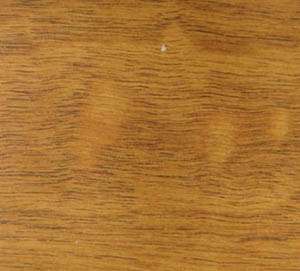
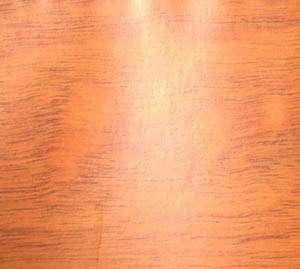

Persimmon image from this book (on the left) then the one from the Encyclopedia of Wood (middle), then one that I took of a sample plank. The images from the books are cropped, but are of exactly the same areas. The book images reproduced here are as true in color to the book plates as I can make them (and it's a pretty good likeness) so you can see how radically different they are from each other even though they are obviosly the exact same image OTHER than color --- because of the light reflected from the page on the Encyclopedia image, you can't tell that quite as easily as you can looking at the actual pics in the books, but believe me, there is no possible doubt. Then comparing them both to my own color-correct sample (which is, admittedly, of a totally different piece of wood, but one that I think is reasonably representative of the species), you can see what I mean when I say that they BOTH have incorrect colors (and that is NOT unique to this particular species).









